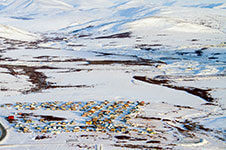Telecommunications plays a major role in the modern world. Individuals, businesses, and large agencies all rely on telecom services to connect and communicate with each other and the digital world. Many people use the internet and other telecommunication services daily, but how these technologies work can seem like a mystery if you aren’t fully immersed in the industry.
As a consumer, having a basic understanding of telecom terminology can go a long way in helping you understand how your internet service works and better communicate with your internet service provider for your home or business.
The 3 Main Types of Internet Service
All types of internet service have the same purpose of connecting your home or business to the global internet. However, different types of internet connections use different technologies. Each service method is unique in how it transmits data and has different broadband capacities, latency, bandwidth, and speed (we break these terms down below).
Here are the three main types of internet service connection:
1. Land-Based Microwave
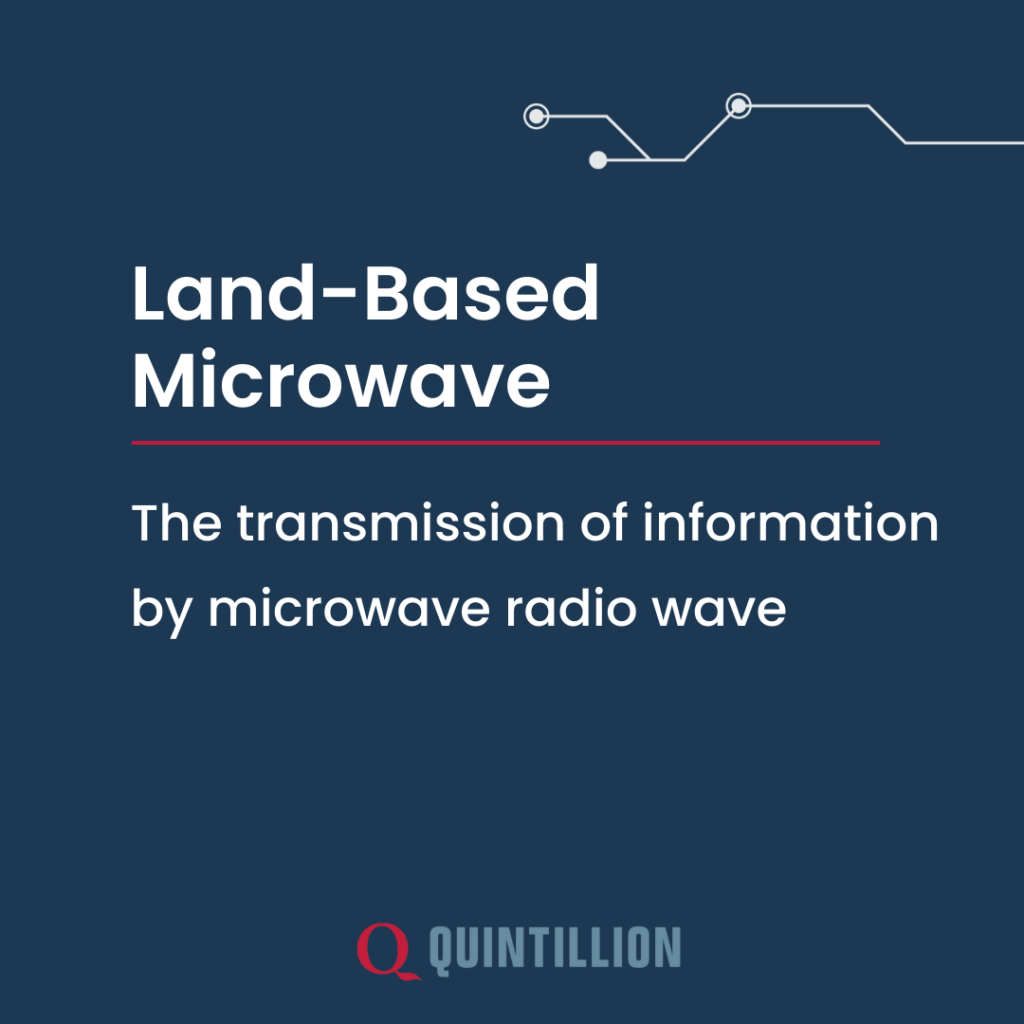
Land-based microwave internet is the transmission of information by microwave radio waves. Often, microwave services are delivered on towers that are run off diesel-fueled generators on mountain-top sites.
2. Satellite
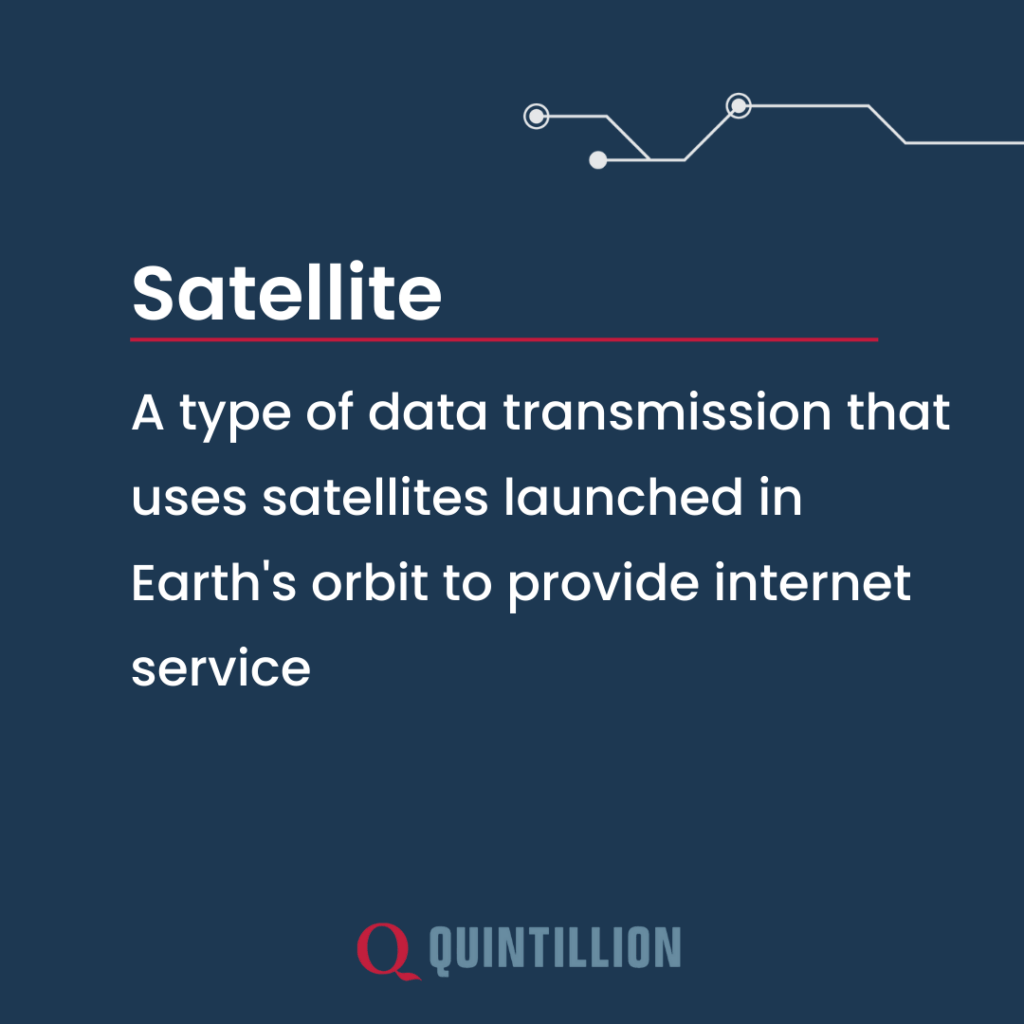
Satellite internet is a type of data transmission that uses satellites launched in Earth’s orbit to provide internet service. This data is routed to a ground station using fiber optic cable, where it is translated into a radio wave signal. This signal is sent directly to the satellite and is then reflected down to Earth to a receiver at your home or business.
Satellites are also used for many other purposes, such as data collection and navigation. Types of satellites are often categorized based on their position in Earth’s orbit:
- Low Earth Orbiting Satellites operate at an altitude between 99-1,200 miles.
- Medium Earth Orbit Satellites operate between 1,201-22,236 miles.
- Geostationary Satellite operates above 22,237 miles.
3. Fiber Optic

Fiber optic cables are thin, flexible fibers with a glass core through which light signals can be sent with very little loss of strength. Fiber optic internet is the gold standard of connectivity.
Bonus Term: FTTH (Fiber to the Home): An FTTH connection is when fiber optic cables are installed and connected directly to a consumer’s home.
Essential Telecom Terms
How does the internet get to your home? At Quintillion, we like to compare the pathway information takes to get from the global internet to your home or business to a road system. At one end of the road, you have the global internet. Information travels across the country to consumers with the interstates and highways – making up the “middle mile” of the internet. From here, these highways branch out into the side streets that lead to your home, which is the “last mile” or the segment of the internet that connects directly to your home.
Both middle mile and last mile segments need to be constructed and maintained to provide reliable service to your home or business. And there are several pieces required to establish a broadband network in your community. If you’re missing one of these pieces, such as a middle mile network, internet services become more expensive or are unavailable.
Middle Mile
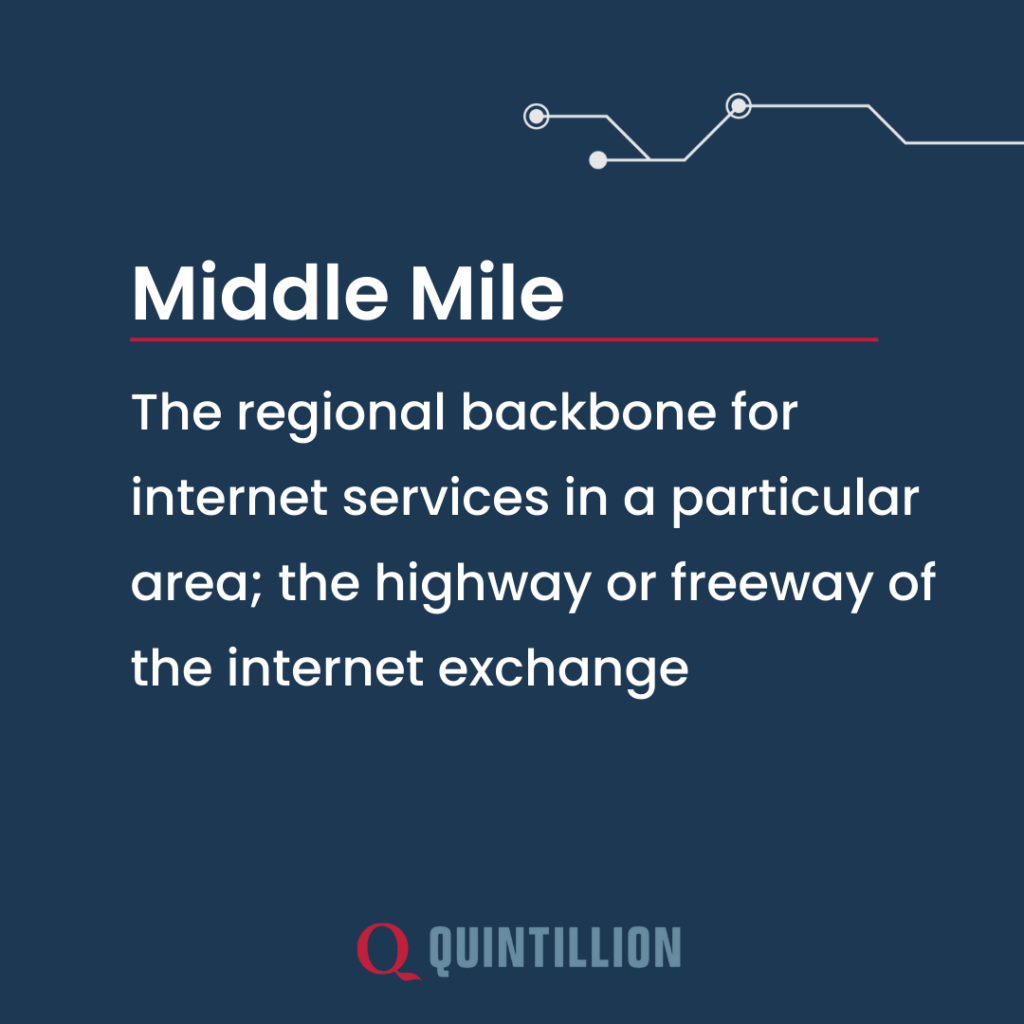
The middle mile is the segment of the internet that makes up the highway or freeway to the internet exchange. It is the regional backbone for services in a particular area. Middle-mile networks provide the infrastructure necessary (such as fiber optic cables, microwave towers, or satellite ground stations) that ISPs can build off of to funnel data to consumers.
Last Mile
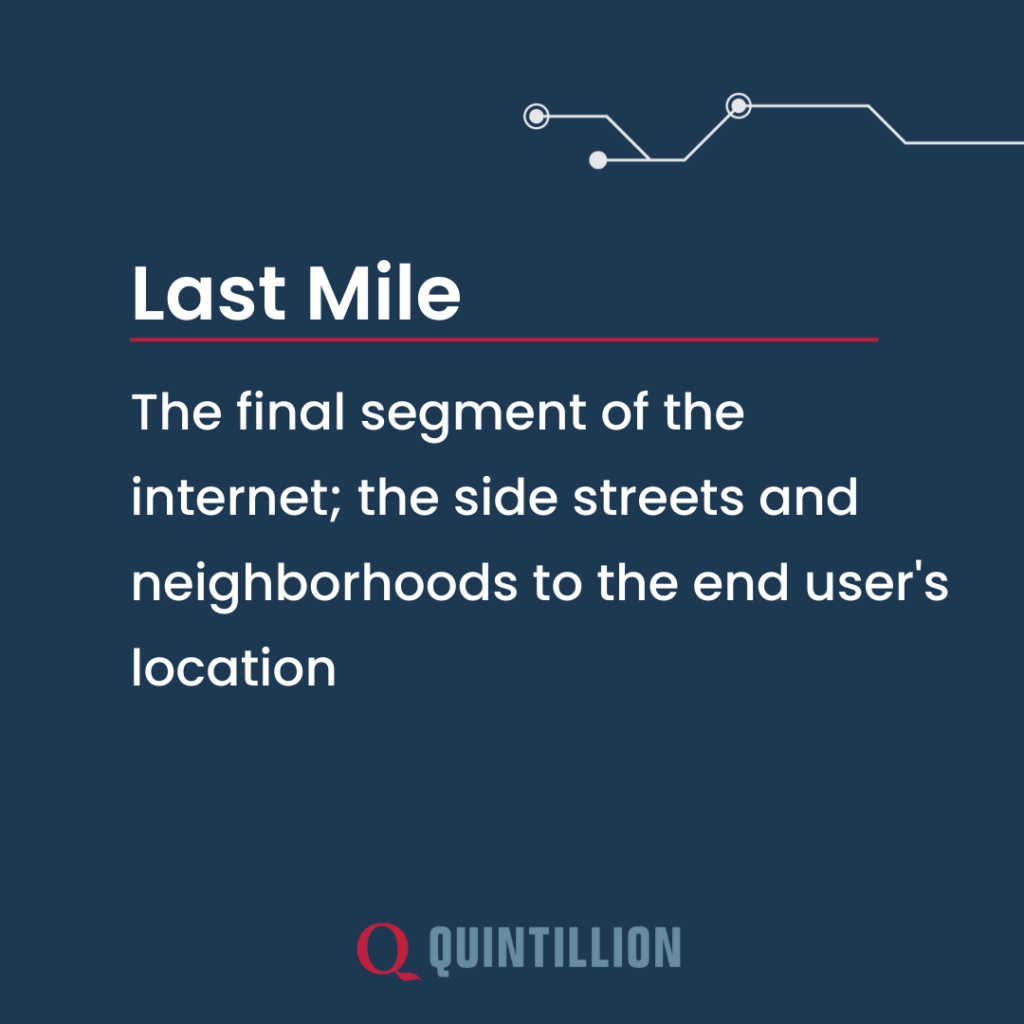
The last mile is the final segment of the internet. It makes up the side streets and neighborhoods to the end user’s location. If your city has a fiber optic cable system, the last mile would be the cables, receiver, or direct lines that go from the larger network to your home or business. When you pay a service provider for internet, you are paying to use this last-mile infrastructure.
Service Provider
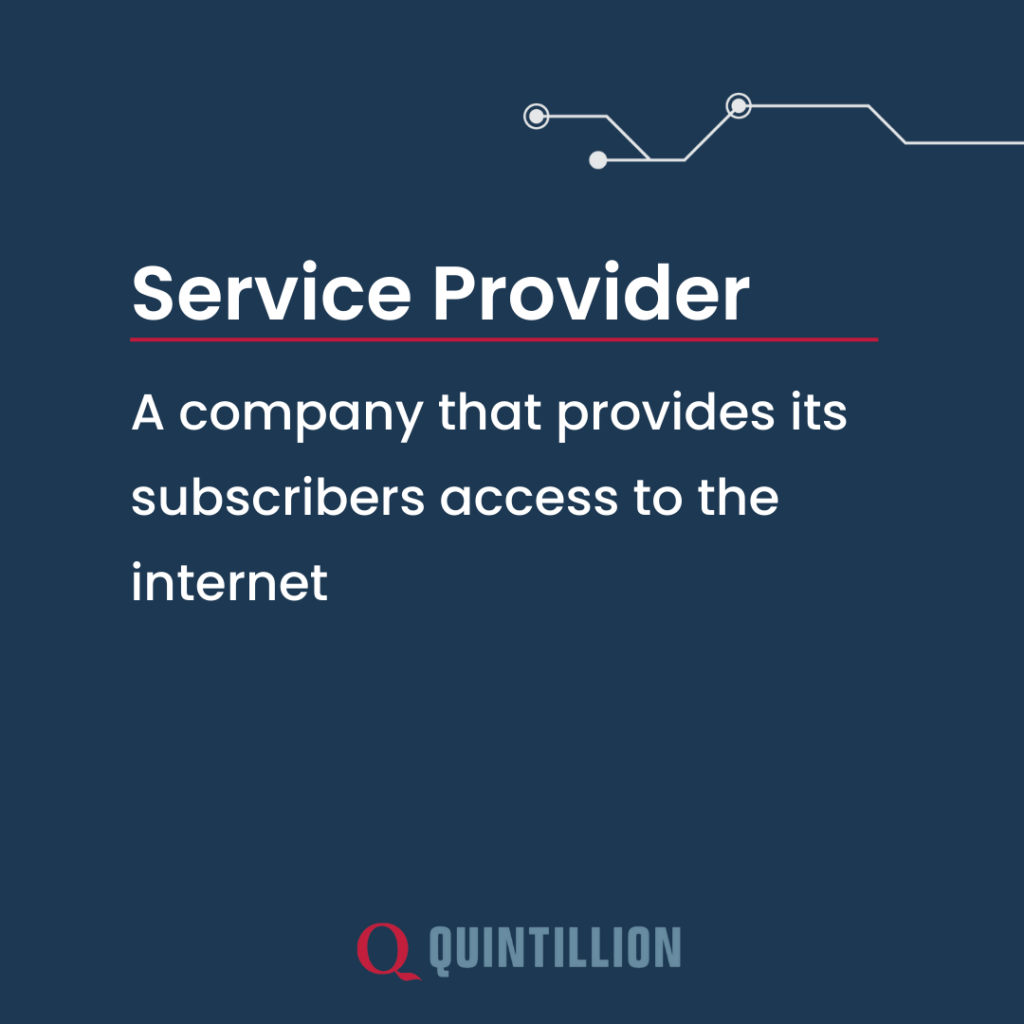
A service provider is a company that provides its subscribers access to the internet. Often, internet service providers (ISPs) are companies that provide services directly to consumers, providing last-mile services. However, there are other types of telecommunication service providers that directly serve certain organizations or ISPs. For example, Quintillion is a provider of carrier ethernet services. As a middle-mile provider, we don’t provide internet services directly to consumers; rather, local ISPs use our infrastructure to provide internet access to their customers.
Cable Landing Station
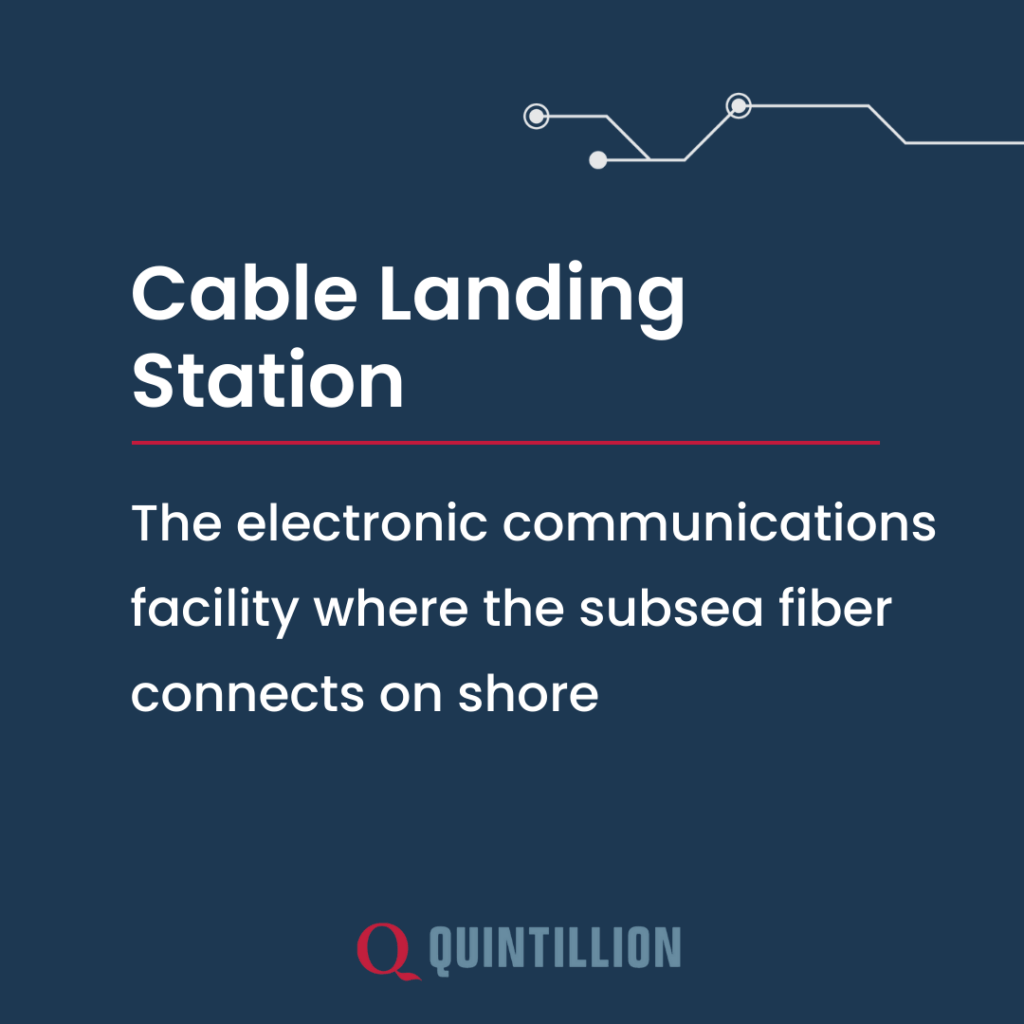
In fiber optic cable systems, cable landing stations are the electronic communications facility where the subsea fiber connects on shore. Subsea cables are fiber optic cables that are laid on the ocean floor, which can span across the ocean to connect different states, countries, or continents. Once connected to a cable landing station, terrestrial cables carry the data to its next location on land.
Construction Costs
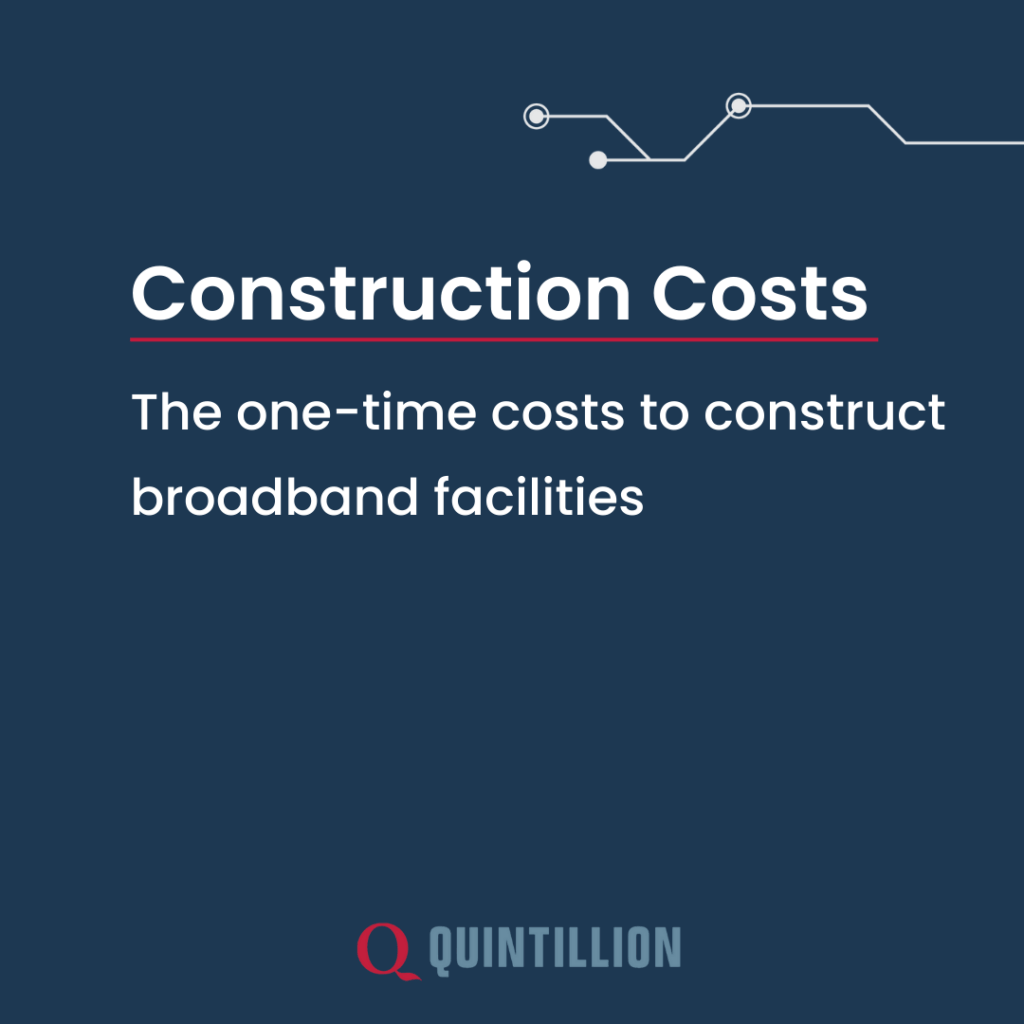
Construction costs are the one-time costs to construct broadband facilities. These costs include the investment it takes to build telecommunication infrastructure, such as laying a fiber optic cable system, constructing a microwave tower, or building a satellite ground station.
Maintenance Costs
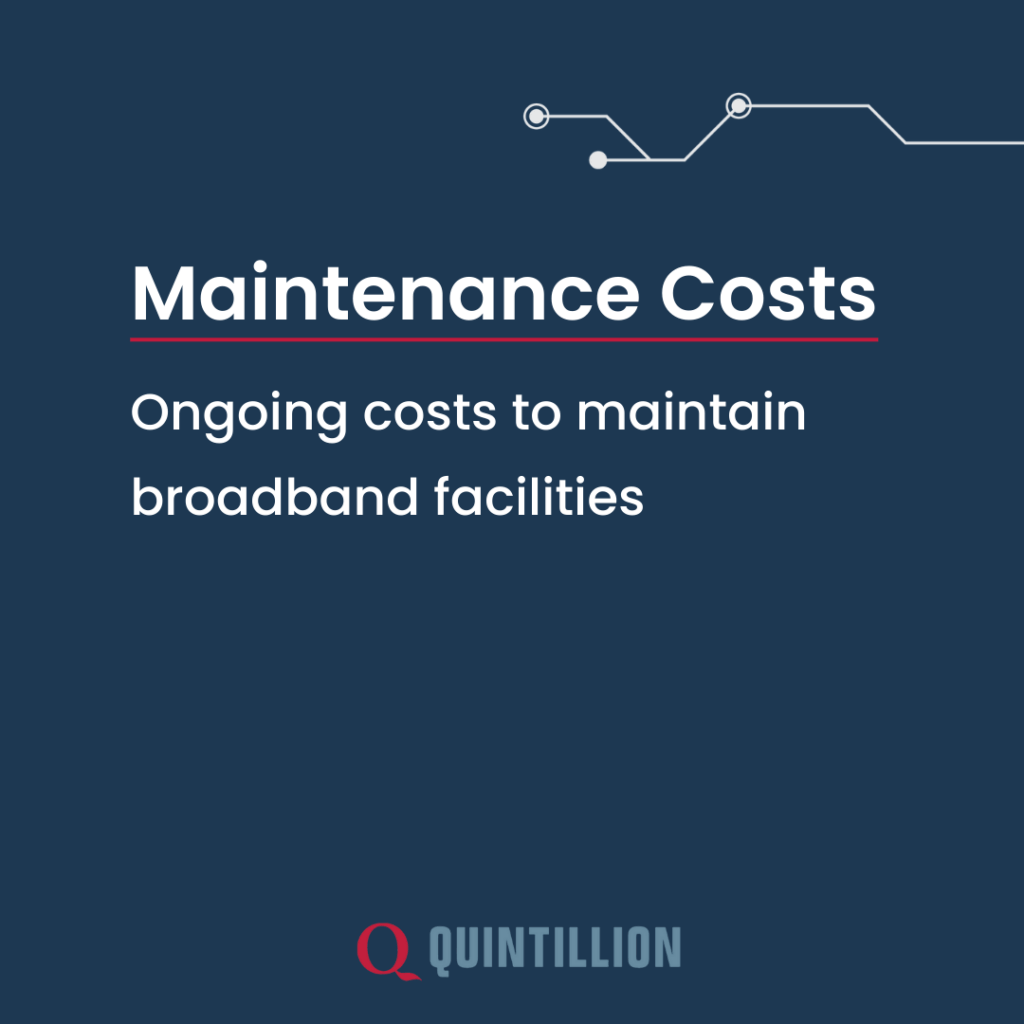
Broadband infrastructure needs to be monitored to ensure reliable, secure, and uninterrupted internet service. Maintenance costs refer to the ongoing costs to maintain broadband facilities. Many factors can be included in this, such as the cost of fuel for a helicopter to reach a mountain top tower site to remove ice.
Telecommunication Metrics
The quality of your internet service varies based on a variety of factors, including the type of internet service that is used, your location, the environment, and the availability of internet infrastructure options in your area. Many people get very frustrated with poor internet service — if your Zoom call keeps getting disconnected or you can’t upload an assignment for school, you’re going to notice. However, many people don’t understand the whole picture of why they aren’t getting reliable service. Here are some of the metrics commonly used when we talk about telecommunications.
Upload Speed

Upload speed is the rate at which data gets transferred from the user’s computer to the web service. For example, you could measure the time it takes to move files from your computer, such as uploading photos to a social media platform. Using our road analogy, upload speed would be the amount of time it takes for a car to travel from your home to the global internet.
Download Speed
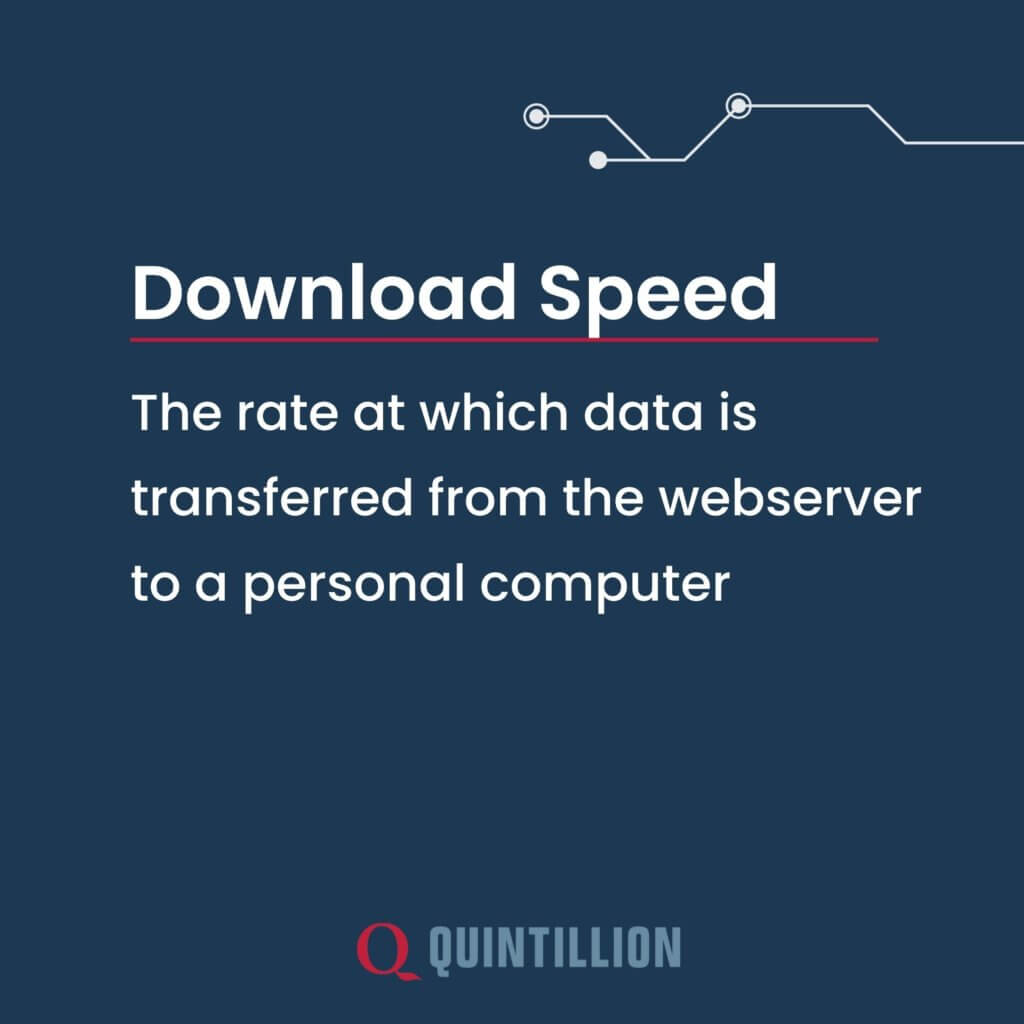
Download speed is the rate at which data is transferred from the webserver to the personal computer. For example, you could measure how long it takes for a website to load or to download email attachments. This time, you’re measuring how much time it takes for the car to get from the internet to your home, which is normally significantly faster than uploading.
Latency
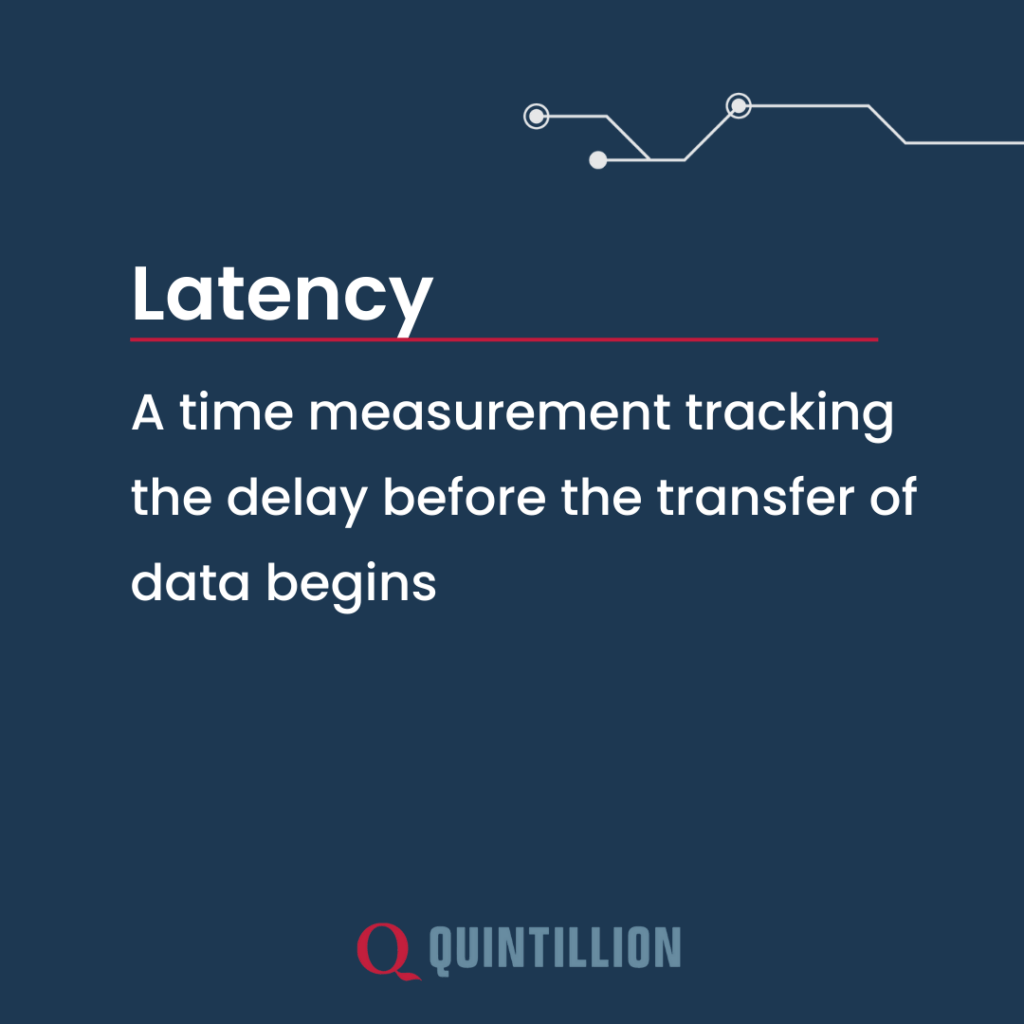
Latency is a measure of time. It tracks the delay, or lag, before the transfer of data begins. Low latency means that the data transfer begins very quickly, whereas high latency means there is a significant delay before data loads. Latency is important in situations where a quick reaction time is needed, such as during video chatting or playing online video games. Latency can be thought of as the time it takes to get your car to accelerate and start moving toward its destination – a car with a faster acceleration has a lower latency.
Bandwidth
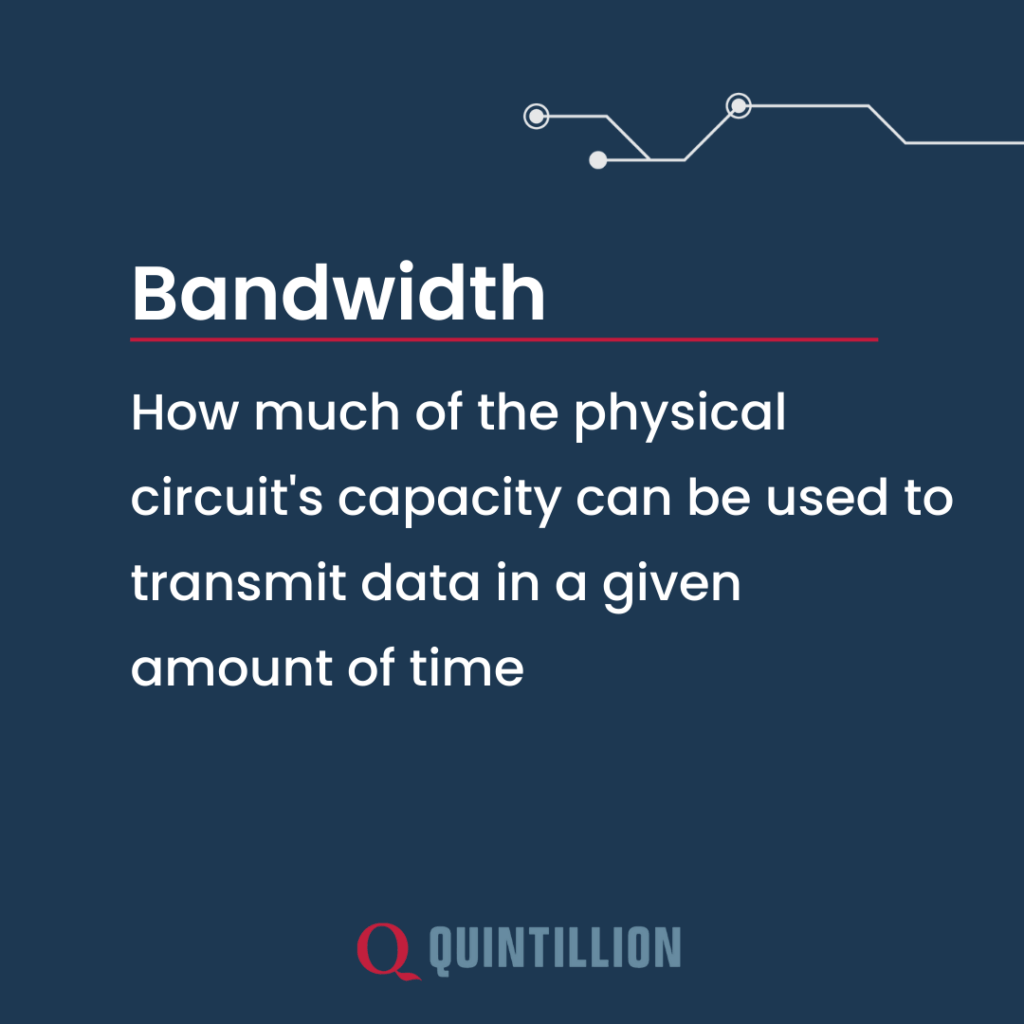
Bandwidth is how much of the physical circuit’s capacity can be used to transmit data in a given amount of time. Since bandwidth is often measured in megabits per second (Mbps), people often wrongly assume that it is a measurement of speed – for example, they might think the internet with a higher bandwidth means they’ll get that much faster service. However, bandwidth is a measurement of volume.
With our road analogy, bandwidth would be how many lanes the road has to accommodate a certain number of cars. Some factors can bog down bandwidth and limit this capacity, such as heavy traffic (multiple household members using the internet at the same time) or lane closures (if an internet service provider limits or cuts your bandwidth).
Capacity
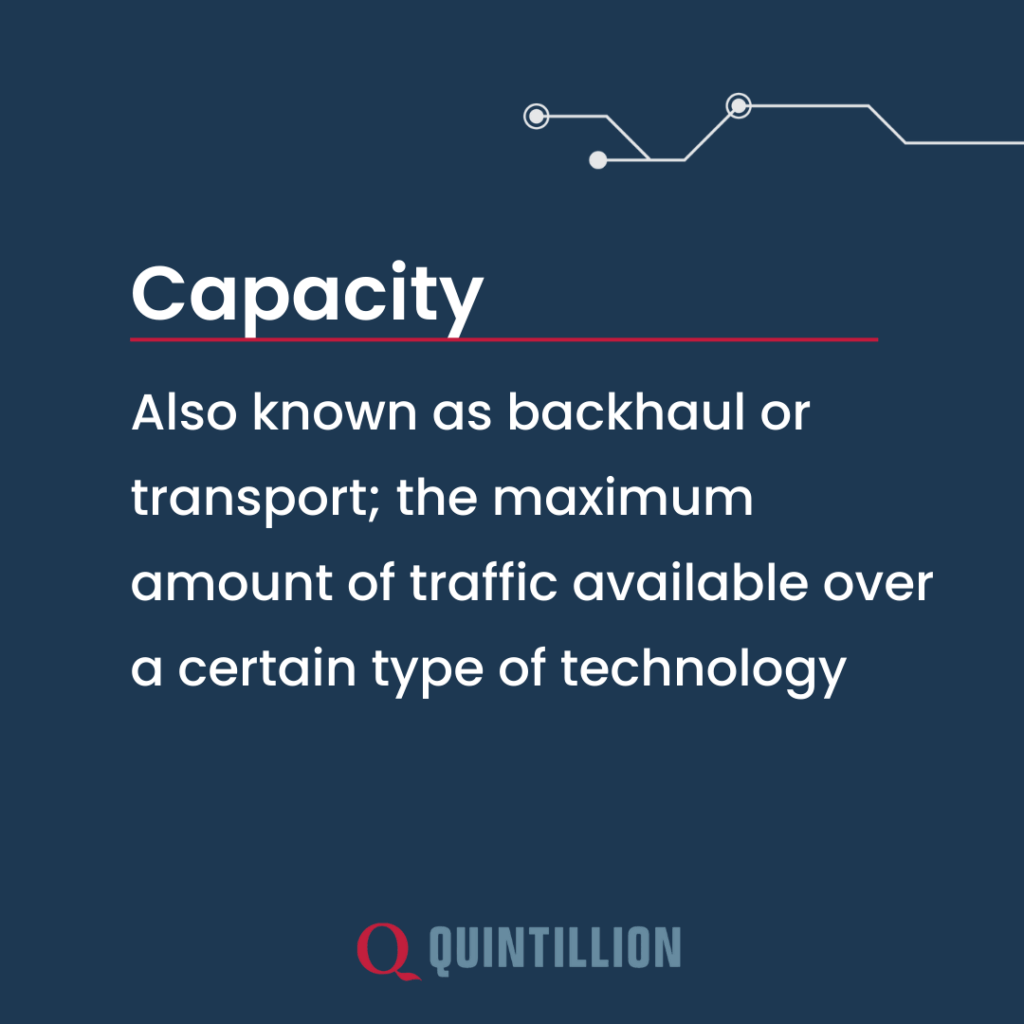
Capacity is also known as backhaul or transport. This is the maximum amount of traffic available over a certain type of technology. For example, the satellite’s total capacity is 3.5G, but its users purchase bandwidth speeds of 25 Megabits per second (Mbps). Network capacity is the number of total cars the freeway can accommodate at one time.
Have questions about Quintillion’s role as a middle-mile provider in the Alaska Arctic? We’d love to hear from you. Connect with our team here.





